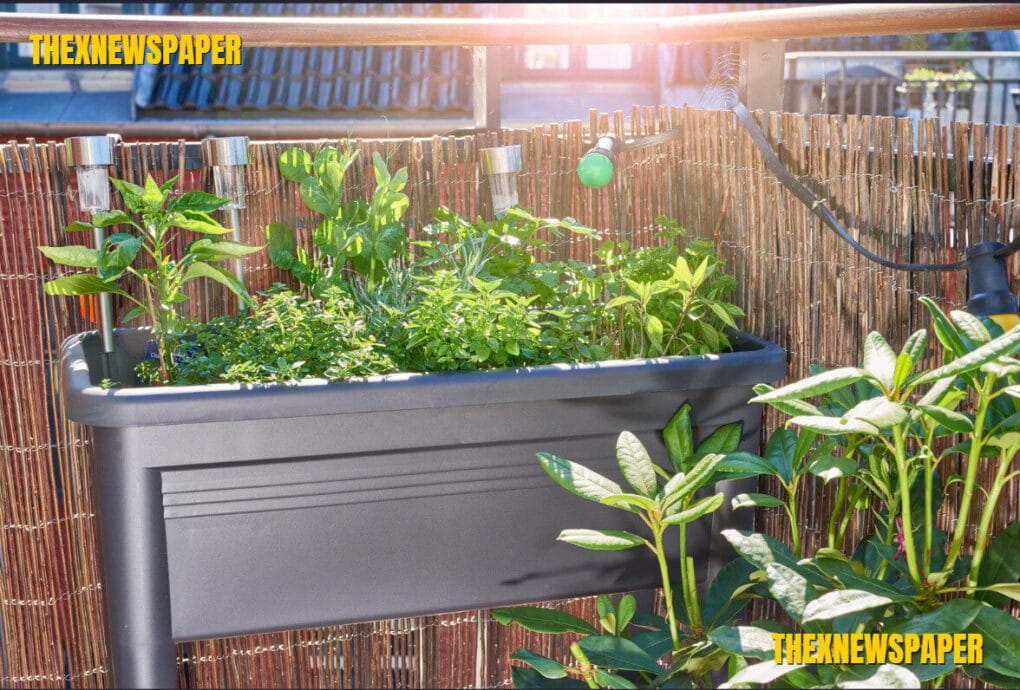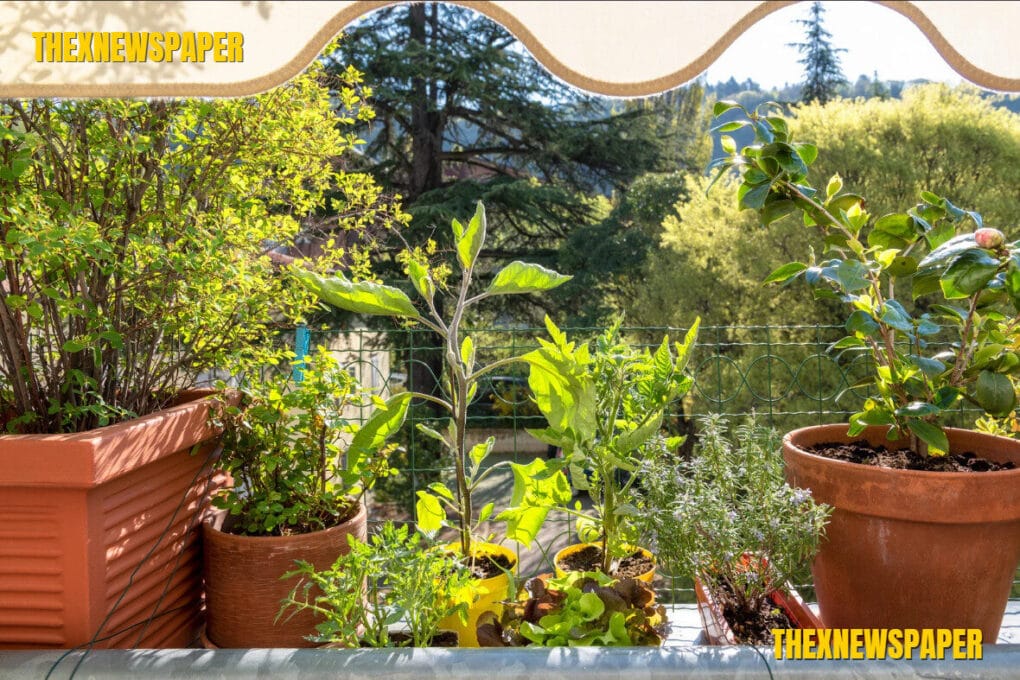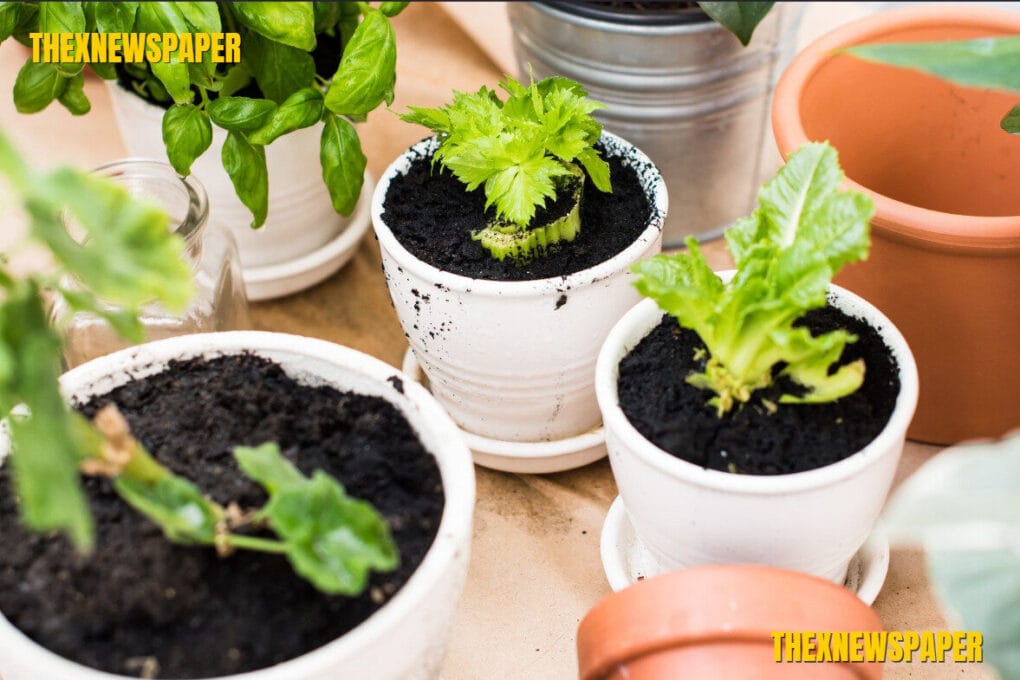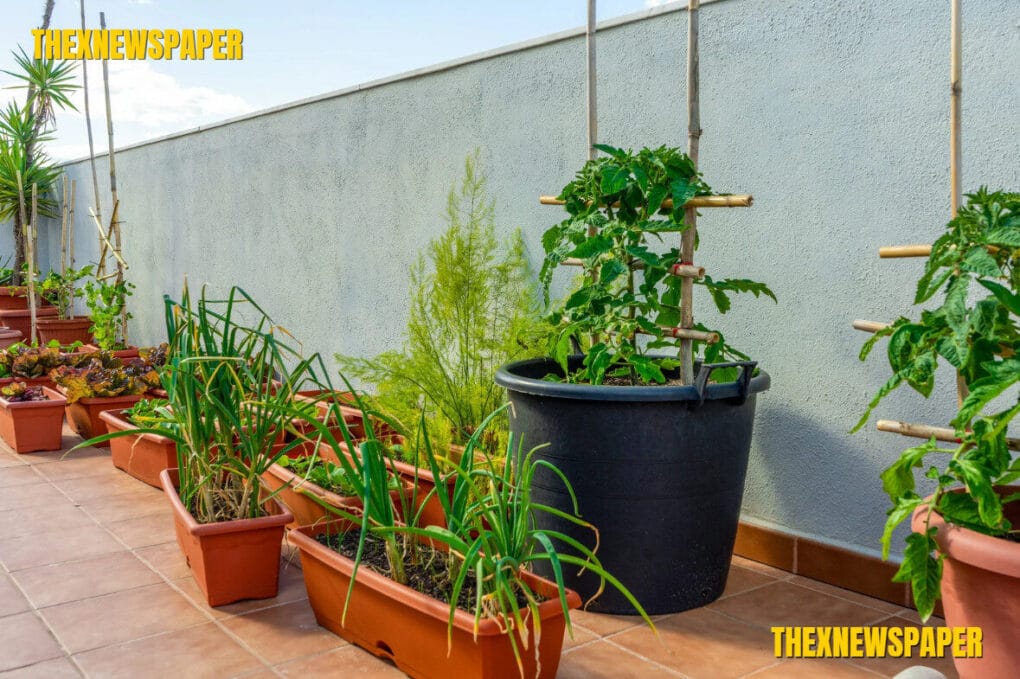Introduction: Why Urban Food Forests Matter in 2025
- With food inflation and climate stress rising, urban dwellers in India and beyond are looking for smarter, greener ways to live. A DIY urban food forest offers the solution.
- These compact, self-sustaining gardens mimic natural ecosystems, allowing you to grow fresh fruits, herbs, and vegetables even in limited spaces like balconies or rooftops. This isn’t just a gardening hobby — it’s a sustainable movement that supports health, climate resilience, and food security.
Key Benefits of Urban Food Forests:
- Reduces dependence on chemical-laden market produce
- Saves monthly grocery expenses over time
- Improves air quality and cools your home
- Encourages sustainable living habits
- Provides fresh, organic produce year-round
Real-Life Example: In Pune, 32-year-old Asha transformed her 8×8 ft terrace into a lush, edible forest. Today, she harvests coriander, lemons, and bitter gourd, cutting her vegetable bills by 50%.
What is an Urban Food Forest?
- An urban food forest is a layered, nature-inspired garden that grows food using principles of permaculture. It uses seven distinct plant layers — from tall fruit trees to ground covers and root crops — to recreate the self-sustaining balance of a natural forest. These systems retain water, regenerate soil, and require minimal inputs once established. Perfect for Indian urban settings, a food forest is scalable — whether you have a 6×6 balcony or a 10×10 terrace.
Why It’s Ideal for Cities:
- Requires minimal maintenance after setup
- Makes efficient use of vertical and horizontal space
- Supports urban biodiversity and pollinators
- Can be created with recycled materials
- Reduces heat and noise pollution
Real-Life Example: In Hyderabad, software engineer Raj built a food forest on his apartment rooftop using old drums and greywater. His lemon tree now shades his mint and turmeric patches, reducing the temperature of his home by 3°C.
Benefits of Urban Food Forests

- Food forests offer more than just food. They improve environmental and social wellbeing. In 2025, they’ve become essential tools for urban resilience and personal health. The ability to grow fresh produce within your home directly supports wellness and food security.
Advantages of Urban Food Forests:
- Economic: Saves Rs. 1,000–2,000/month in groceries
- Ecological: Captures carbon, reduces city heat
- Nutritional: Fresh, pesticide-free harvests
- Emotional: Gardening reduces stress and boosts mental health
- Educational: Great for teaching kids about sustainability
Real-Life Example: In Bengaluru, a co-living space adopted terrace food forests. Now, over 30 residents harvest curry leaves, spinach, and mint, building community and cutting costs.
The 7 Layers of an Urban Food Forest

- Understanding plant layers is crucial for food forest success. Each layer serves a purpose — from shading soil to fixing nitrogen. These layers work together to minimize maintenance and maximize output.
The Seven Layers (With Examples):
- Canopy – Guava, Lemon (Provides structure and shade)
- Sub-Canopy – Banana, Moringa (Fast-growing and nutritious)
- Shrubs – Curry Leaf, Pomegranate (Hardy and multi-use)
- Herbs – Tulsi, Mint, Lemongrass (Medicinal and aromatic)
- Ground Cover – Spinach, Sweet Potato (Preserves moisture, edible)
- Root Layer – Ginger, Turmeric (Health-boosting root crops)
- Climbers – Passion Fruit, Bitter Gourd (Use vertical space)
Real-Life Example: In Chennai, a school installed a 7-layer food forest in a 20×20 ft garden. Students now eat turmeric-laced spinach grown in their science classroom.
Step-by-Step Setup Plan: Start Your Food Forest in 2 Days

- Setting up a food forest can be simple. Here’s how you can create a beginner-friendly system over one weekend. Planning and layering are the two key stages.
Day 1: Plan & Prepare
- Measure your space (ideal: 6×6 or 10×10 ft)
- Map sunlight exposure (minimum 4–6 hrs)
- Collect containers (drums, grow bags, pots)
- Start a compost pile (kitchen waste + dry leaves)
- Prepare soil mix (organic compost + coco peat + neem cake)
Day 2: Plant & Mulch
- Start with canopy trees near walls or corners
- Layer herbs and ground covers in front
- Add vertical structures for climbers
- Apply mulch (dry leaves, rice husk)
- Water deeply and label plants
Real-Life Example: In Jaipur, Renu, a retired teacher, built a 10×10 ft food forest with help from her grandson. Using broken tiles and old buckets, they grew lemon, tulsi, and coriander in just two days.
Best Plants for Beginners in India

- Choosing the right plants helps you succeed. Focus on fast-growing, low-maintenance, and climate-suited species. These plants thrive in Indian conditions and are excellent for first-timers.
Top Starter Plants:
- Lemon & Guava Trees: Hardy and evergreen
- Curry Leaf & Pomegranate Shrubs: Multipurpose
- Tulsi, Mint, Coriander: Ideal for tea and cooking
- Spinach & Sweet Potato: Fast-growing ground cover
- Passion Fruit & Ivy Gourd: Space-saving climbers
Real-Life Example: In Ahmedabad, two college friends converted a tiny 5×6 balcony into a mint-lemon patch with just 8 recycled planters. Their small project turned viral on social media.
Caring for Your Food Forest: Weekly Routine

- Urban food forests are low-maintenance after setup. A weekly care routine ensures optimal health and harvest. Focus on natural methods to avoid chemicals.
Weekly Checklist:
- Water 2–3 times per week (prefer morning)
- Turn compost and add new kitchen waste
- Check for pests, spray neem oil if needed
- Trim overgrowth and train climbers
- Harvest herbs and rotate crops
Real-Life Example: Kiran from Kolkata uses banana peels and coffee grounds in her compost. With just 3 hours/week, she enjoys tulsi tea and fresh spinach year-round.
Urban Food Forest Case Studies Across India

Mumbai: Society Rooftop Garden
An apartment in Andheri turned its rooftop into a community food forest. Residents now share spinach, mint, and guava.
Delhi: Priya’s Balcony Farm
Priya’s 6-ft balcony grows strawberries, coriander, and hibiscus using recycled planters. She saves ₹1,200/month.
Bangalore: Tech Campus Garden
A tech park built a rooftop forest with curry leaf, lemon, and turmeric. Cafeteria meals are now 30% garden-sourced.
Chennai: Edible School Garden
A Chennai school integrated a food forest into their science curriculum. Students care for hibiscus, sweet potato, and turmeric.
Goa: Homestay Forest Patio
A beachside homestay replaced lawn with a food forest. Guests pick fresh mint and passion fruit for cocktails.
Common Challenges and Easy Fixes
Troubleshooting Guide:
- Yellow Leaves? Overwatering or poor drainage
- Pests? Use neem oil + grow marigold nearby
- No Flowers? Ensure 6+ hrs of sun and fertilize
- Slow Growth? Check soil quality and pH
- Dry Soil? Use mulch and retain moisture
Real-Life Example: In Lucknow, a young couple fixed pest issues by planting lemongrass and marigold around their tomato plants. They now grow 70% of their daily vegetables.
Final Tips – One Seed Can Transform Your Home

- The DIY urban food forest is more than a trend — it’s a sustainable, low-cost solution to many modern problems. Whether you live in Delhi or Dubai, these forests help reduce expenses, cool homes, and improve diets.
Takeaway Actions:
- Start with one herb pot today
- Reuse containers and organic waste
- Talk to neighbors or kids about gardening
- Document your progress online
- Share your first harvest photo proudly
Real-Life Motivation: Sanya from Gurgaon started with a single tulsi pot. Within a year, she converted her entire balcony into a thriving edible forest and now mentors others through workshops.
FAQs About DIY Urban Food Forests
Q1: What is an urban food forest?
Ans: An urban food forest is a self-sustaining garden that mimics natural ecosystems, utilizing
multiple plant layers to grow fruits, vegetables, and herbs. It is designed to thrive in limited spaces
like balconies and rooftops, promoting sustainability and food security in urban areas.
Q2: How much space do I need to start an urban food forest?
Ans: You can start an urban food forest in as little as 6×6 feet. Even small balconies can
accommodate a variety of plants using vertical gardening techniques and container gardening.
Q3: What are the benefits of having an urban food forest?
Ans: The benefits of having an urban food forest
- Reduces grocery expenses with fresh produce
- Improves air quality and urban cooling
- Supports biodiversity and sustainability
- Provides pesticide-free, nutritious food
- Enhances mental well-being through gardening
Q4: How do I choose the right plants for my urban food forest?
Ans: Select plants suited to your climate and available space. Good options include lemon trees,
curry leaves, tulsi, and mint. Use a mix of canopy, shrubs, herbs, and ground cover plants.
Q5: How do I set up my urban food forest in just two days?
Ans: I set up my urban food forest in just two days
- Day 1: Measure space, observe sunlight, gather containers, start compost, and prepare soil.
- Day 2: Plant in layers, add climbers, mulch, water deeply, and label everything.
Q6: What are common challenges when maintaining an urban food forest?
Ans: Common issues include pests, poor soil, and water retention. Use natural remedies like neem
spray, compost, and mulch to solve them.
Q7: Can I grow a food forest in a small apartment?
Ans: Yes! Use vertical gardening and compact plant varieties in containers to grow even in tiny
spaces.
Q8: How long does it take to see results from my urban food forest?
Ans: Herbs grow in 30-45 days; fruit trees may take 6-12 months. Consistent care ensures success.
Q9: What resources are available for learning more about urban food forests?
Ans: Try Permaculture Institute, Gardening Know How, YouTube tutorials, and local community
gardening groups
if you have any problem with this content or anything else related to this blog, please contact us. link


